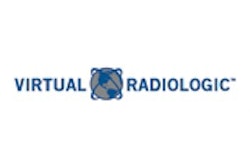A proposal by Massachusetts General Hospital of Boston to use its teleradiology division to take over most reading services for a Rhode Island hospital is raising hackles in the state. Many local radiologists see the move as a harbinger of a future when large academic hospitals cherry-pick hospital contracts via teleradiology links, leaving local radiology groups with the crumbs.
After providing radiology services to 359-bed Kent Hospital for the past 30 years, Toll Gate Radiology of Warwick, RI, soon could lose the majority -- if not all -- of its business to MGH's teleradiology unit. The prospect of an out-of-state teleradiology provider taking over the bulk of Kent's 140,000 annual imaging studies has drawn Toll Gate's ire, as well as the attention of the Rhode Island Radiological Society (RIRS) and other radiologists in the state.
RIRS president Dr. John Pezzullo, who also serves as a staff radiologist for radiology group Rhode Island Medical Imaging, described MGH's actions as "essentially a raid of a radiology practice."
In a letter to MGH radiologist in chief Dr. James H. Thrall, Pezzullo asked Thrall to reconsider the move, adding that Rhode Island "is already handicapped by the lowest reimbursement rates in the country." Pezzullo continued that the tentative contract between Kent and MGH, recent reimbursements reduction from the Deficit Reduction Act (DRA), and a proposed 2% surcharge at the state level for imaging centers "will further undermine the distinction of radiology as a vital medical specialty in our state. The proposed plan threatens an already weakened workforce, and a specialty which has significant threats from outside clinicians."
RIRS plans to submit a resolution at the American College of Radiology's (ACR) annual meeting in Washington, DC, in May to discuss the issue and its potential effect on radiology in general.
Through a spokesperson at MGH, Thrall declined to comment on Pezzullo's letter or the tentative contract with Kent Hospital. The ACR also has declined comment on the issue.
MGH teleradiology
MGH has been providing teleradiology services for the past several years, particularly subspecialty interpretation of CT and MRI studies. The hospital's Massachusetts General Physicians Organization (MGPO) recently rolled out a new nationwide program through a partnership with Minneapolis-based teleradiology services company Virtual Radiologic.
MGH's teleradiology Web page notes: "Our new national teleradiology program is intended to complement and supplement -- not compete with -- understaffed radiology practices. The focus will be on using MGPO's sizeable capacity to help improve patient care and provide more predictable schedules for practicing physicians in areas where radiology demand exceeds the capacity of available radiologists."
Kent Hospital is a nonprofit, acute care facility, which handled approximately 140,000 inpatient and outpatient imaging studies in its 2006 fiscal year (end-September 30). The facility is a member of Care New England, which includes Women & Infants Hospital and Butler Hospital in Providence.
'Inadequate' offer
Dr. Anthony Bruzzese is one of three full-time staff radiologists at Toll Gate Radiology, which handles all of Kent's images. Toll Gate also utilizes part-time radiologists, physicians, and teleradiology services firm NightHawk Radiology Holdings of Coeur d' Alene, ID, for weekend and off-hours reading.
Bruzzese said hospital officials told him that Kent would outsource 70% of its imaging volume to MGH. Kent already has signed a letter of intent for the teleradiology service. In addition, Bruzzese said the hospital asked him and his two colleagues to become salaried employees of Kent. Toll Gate also would have to close its office practice.
Bruzzese described Kent's salary offers as "inadequate," and Toll Gate declined the offer in its entirety. Calls to Kent Hospital to confirm details of the tentative contract with MGH, its offer to Toll Gate, and reaction to Pezzullo's and Bruzzese's comments were not returned.
Bruzzese speculated that Kent's tentative pact with MGH is not a cost-cutting decision -- since the facility would have to invest at least a six-figure amount for an IT connection between Warwick and Boston -- but, rather, a marketing move to enhance the Warwick facility's standing in the community through a direct association with MGH.
The only good argument that Kent could make, Bruzzese added, is if Toll Gate Radiology were understaffed and unable to handle Kent's imaging workload. "We have been doing the work," Bruzzese said. "It isn't like we can't cover next Sunday and there is no one here."
Filling the gaps
RIRS president Pezzullo said that if MGH teleradiology services were filling gaps in coverage at Kent, he would have no problem with MGH coming into Rhode Island.
"If that were true, you would think the first people they (MGH) would have contacted at Kent Hospital would have been the radiologists," Pezzullo said. "They (MGH) did this in an underhanded way, through the back door, dealt with the hospital administration, and undermined (Toll Gate) without getting them involved at all. This is essentially a raid of a radiology practice."
RIRS would like to see Rhode Island radiologists staff Kent full-time, while the hospital uses an out-of-state teleradiology firm for excess imaging studies.
"I don’t think any radiologist would have a problem with that, given there are manpower issues in the state," Pezzullo said. "That scenario would be good, but the way things have been set up currently with this move, it is a terrible situation for radiologists in this state."
'Probably inevitable'
To be sure, the case of MGH and Kent Hospital isn't the first time that an outside entity has tried to garner a hospital's radiology business from a local practice.
Dr. Eric Trefelner, president of NightShift Radiology of Montara, CA, commented that teleradiology companies, radiology practices, academic institutions, and hospital administrators all are under "intense pressure" to increase revenues.
"If you're a publicly traded company -- as many of the (teleradiology) businesses are becoming -- they are beholden to their shareholders to show a profit," he added. "They can literally steal business from other radiologists. They are under a fiduciary responsibility, in a sense, to do that."
In addition, radiologists in small community hospitals may welcome an outside entity, because they don't have the expertise in certain areas.
NightShift Radiology has 17 radiologists on staff and contracts to service 90 U.S. hospitals, handling approximately 800 preliminary exam reads per night. The company's contracts are with local radiology practices that serve the hospital.
"If, for some reason, the local radiology group were to leave that hospital, they would have the option of making us leave as well," said NightShift co-founder Dr. Michael Myers. "We would not be able to go back for two years. We put that in our contracts so we would not be perceived as a threat to local radiologists."
Trefelner and Myers both said that the Rhode Island issue could set -- in Myers' words -- "a very bad precedent, but it was probably inevitable," given "the ease we now have in moving around studies, and hospitals trying to cut and contain costs."
"Their job is to make money, not necessarily placate the radiologists in Rhode Island," Trefelner said. "You can easily make the argument that we live in a capitalist country."
Some Rhode Island radiologists see it a bit differently, however. One is Dr. Jerrold Robins, president of XRA Medical Imaging, a Rhode Island radiology group that is not affiliated with either Toll Gate or Kent Hospital.
"This predatory move is an assault on the profession of radiology," Robins said in an e-mail to AuntMinnie.com. "Teleradiology has many excellent applications, including the provision of 24-hour coverage, and the provision of manpower to underserved communities including niche specialty expertise, when performed at the invitation of the local radiology practice. The use of teleradiology to provide services remotely, without the consent of the current radiology group it seeks to displace, is not within the spectrum of applications of teleradiology that I believe would be condoned by the radiology community."
By Wayne Forrest
AuntMinnie.com staff writer
April 3, 2007
Related Readings
Survey says: Domestic teleradiology preferred by referrers, November 29, 2006
Demand rises for locum tenens radiologists, November 1, 2006
Multiple industry trends increase demand for subspecialty radiology, October 5, 2006
Malpractice insurance for teleradiology: What constitutes good coverage? March 21, 2006
Offshoring, teleradiology, and the future of our specialty, March 20, 2006
Copyright © 2007 AuntMinnie.com



















